
Unraveling the Pollination of Kura-Araxes Culture of Georgia
Syeda Sukena Zehra, 2023 Katherine Barton Platt Fieldwork Scholarship Recipient
The Gadachrili Gora Regional Archaeological Project Expedition (GRAPE) aims to trace Georgian cultural roots back to their Neolithic ancestors by examining cultural markers on the land. The 2023 excavation season was divided into periods and culture groups to further unravel the region’s complex history.
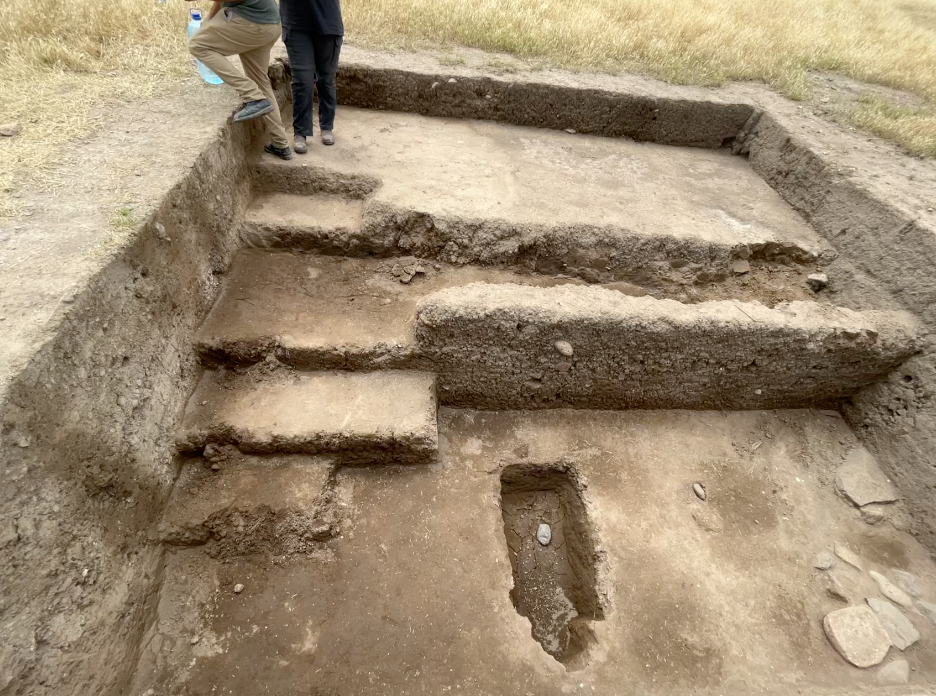
Initially, I began work with a team of 5 at the site of Khait-Maze, which dates to the Early Bronze III. Evidence from the site points to a melding of cultures at the crossing of the rivers Kura and Araxes. Cultures of Mesopotamia and the Caucuses acted as reciprocal partners, building a material and cultural kinship. The idea of grasping history literally within one’s palms is transcendent. This year, the team expected to find funerary features because of burial pits which had been revealed during prior excavations north of the site. After preliminary topsoil removal within the 5x5m trench, 5 potential feature outlines were identified, and these were inferred to be burials, similar to the previous excavation. Archaeological context was reached at about 2m depth in a 2x5m probe started in the north in the trench. The team excavated a plaster-like floor, possibly within a building, which was an exciting find. This plaster lays on top of a caramel-y clay surface and can be seen throughout the loci.
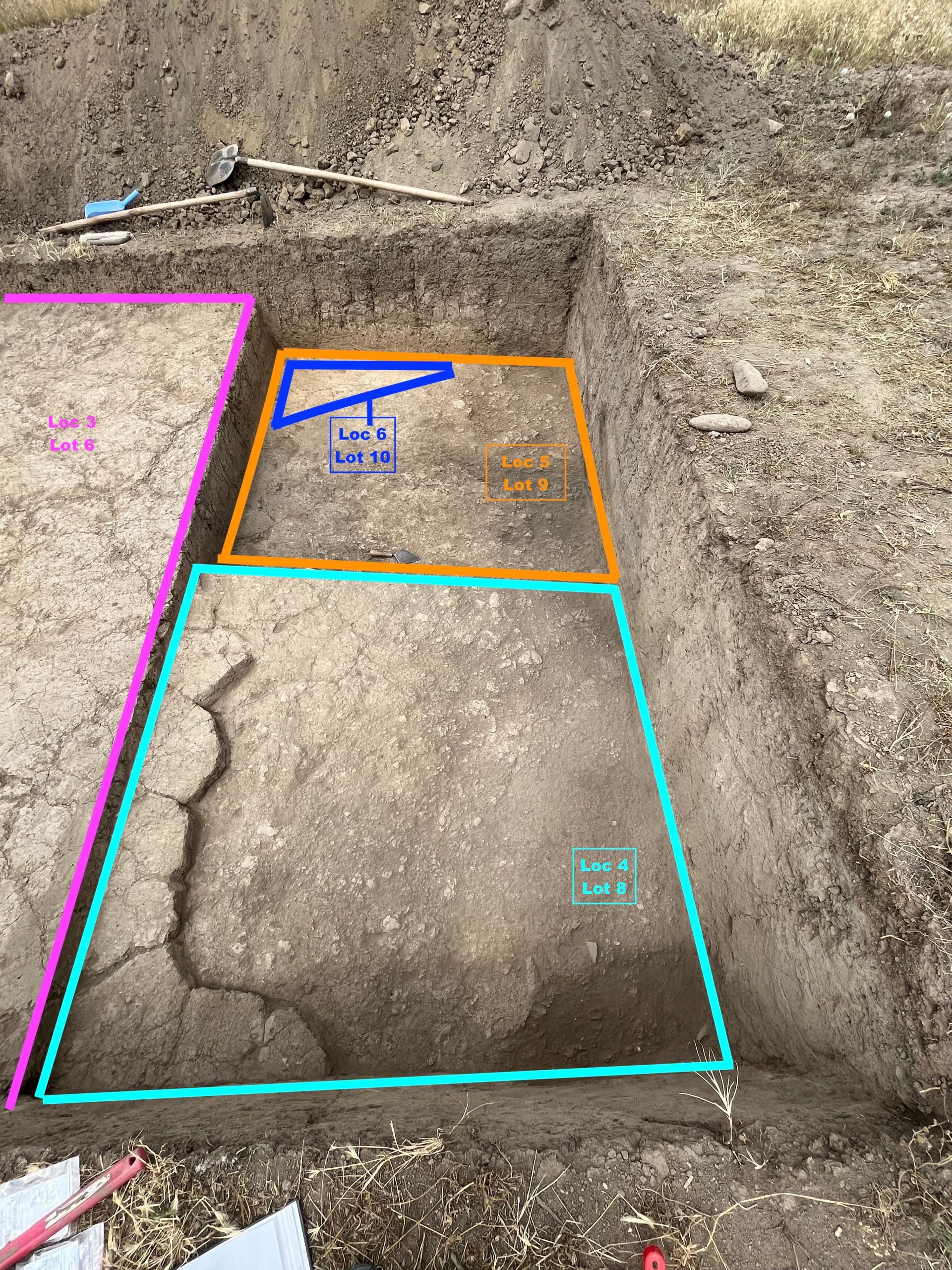
Current interpretation suggests the excavation square is on top of a building surface rather than a burial site. This is further supported by a post hole made of wood excavated within the probe, which may indicate that the team has reached the bottom surface of the Early Bronze III architecture. Ceramic evidence also points to an Early Bronze age context with the excavation of black and red ceramics that are smooth and burnished on both sides. The team encountered very dense Roman and Late Antique ceramic deposits above the archeological horizon. These deposits were very informative in cementing the continued use of the large site as both a burial ground to the far north and as a a potential domestic area, located along a transit route throughout its history. Larger ceramic finds within the possible architectural feature showcase the Khirbet Kerak cultural influence of incised patterns and motifs on black burnished ware. Overall, the finds reveal great Levantine coastal influence on the society within this region.
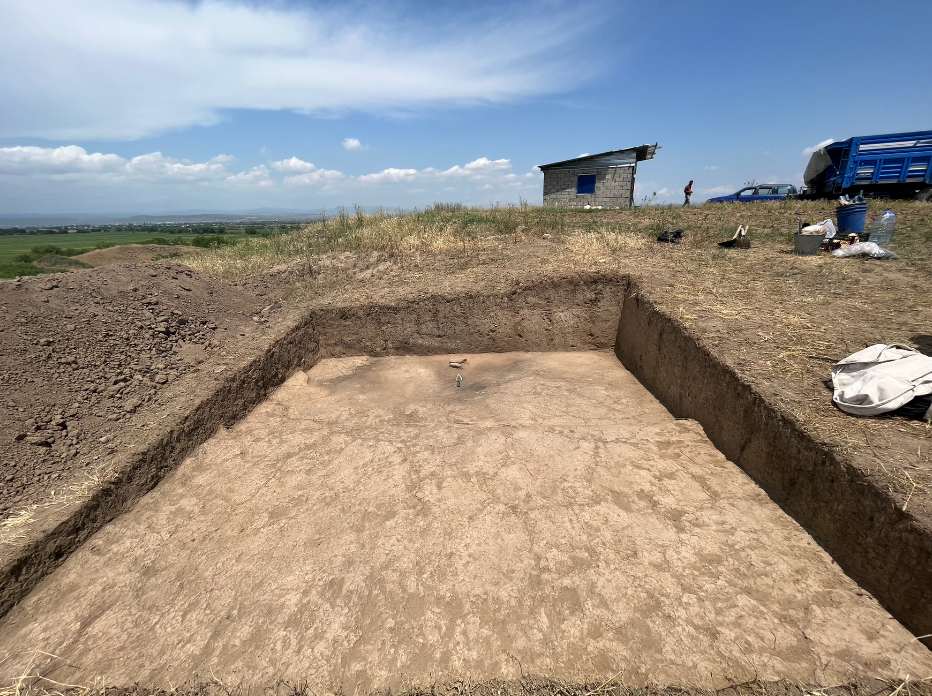
In the final two weeks, I began supervising excavations of a new site estimated to date to the Neolithic along with the project’s Georgian co-director. This site, newly-named Imirchala, is located on a mound about a 10-minute drive to the west of Khait-Maze at relatively higher elevation. Initial surface survey showed a high density of obsidian micro artifacts and refuse dating to the Neolithic, but excavations did not reveal any archaeological features. The team then focused on a 4x4m trench where multiple mudbrick features, possibly storage units, were revealed. This trench also contained a fire feature in the northwest corner along the wall of the trench, which was very interesting. Although we could not confirm a Neolithic archaeological context at Imirchala during the short excavation period, the ceramic finds do point to a Bronze Age domestic setting.
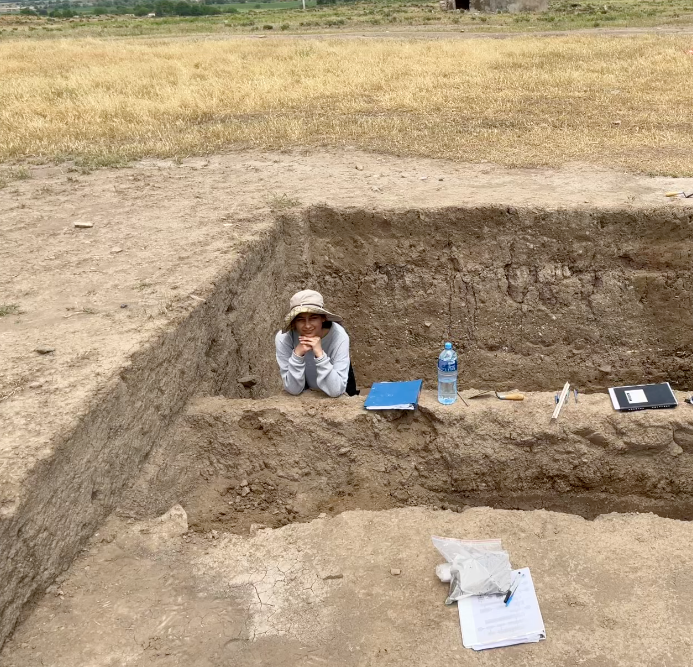
Evidence from these two sites could serve to indicate the social composition of Kura-Araxes societies and the layout of mortuary and domestic areas. This is only a preliminary interpretation, but as I continue to research, we can find the changes in cultural practices that emerge when these Mesopotamian and Caucasian-Levantine cultures cross-pollinate. At both sites, ceramic bases are essential in testing for wine making or preserving activities during the Bronze Age III. These finds could greatly inform Georgian cultural roots, pointing to an amalgamation of cultures which influences modern practices. Testing these ceramics can reveal not only the possible importance of wine culture, but also how dietary practices and material culture are influenced by the interaction of multiple groups.
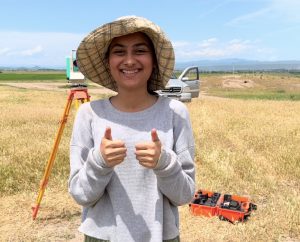
American Society of Overseas Research
The James F. Strange Center
209 Commerce Street
Alexandria, VA 22314
E-mail: info@asor.org
© 2025 ASOR
All rights reserved.
Images licensed under a Creative Commons Attribution-NonCommercial-ShareAlike 4.0 International License
